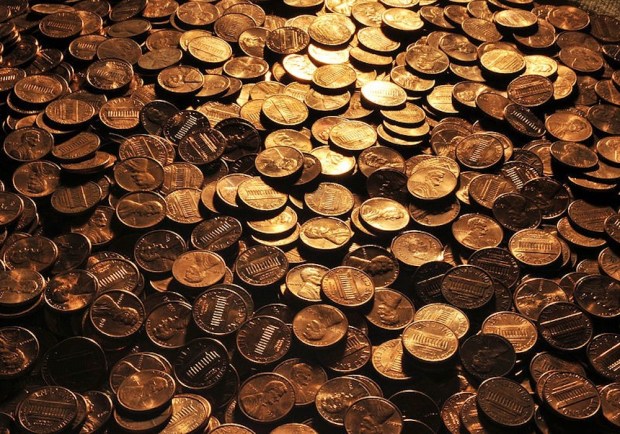The Price Problem With Pennies And Nickels

When people say the government is wasting money on something, they are, generally speaking, being a little imprecise with language. What they intend to confer is that the government is spending money on something they don’t agree with and that they should be spending that same money on something more useful. An individual can make a better and worse case there depending on what they are talking about, but strictly speaking, they aren’t talking about money being wasted so much as being misspent.
Unless, of course, that person is talking about pennies or nickels, in which case they actually mean that money is being wasted, since the cost of producing both coins is greater than the face value of the coin.
Since 2006, the U.S. Mint has spent more money to produce and distribute nickels and pennies than the coins are actually worth — a result of rising metal prices. A penny costs 1.7 cents, while a nickel is actually an eight-cent investment for the government, according to a new report from the U.S. Government Accountability Office (GAO).
So, what to do?
Use cheaper metals?
Nope. There is almost no way to do that, since 97.5 percent of every penny is zinc and zinc is as cheap as it gets.
And using new coins would cost businesses, which would have to update things like vending machines to accept new coins that are now differently composed.
Which leads to option two: Just get rid of both — a move that would save the government about $40 million a year.
Changing the composition of nickels, dimes and quarters, on the other hand, would cost businesses between $2.4 billion and $10 billion, according to some estimates. Notably though, the GAO says that those estimates are too high, as they are projections based on using steel in coins and steel has already been ruled out as a new material as too easy to counterfeit.
With no solution proposed, for the time being, it seems the government’s official plan is to literally waste money producing money.